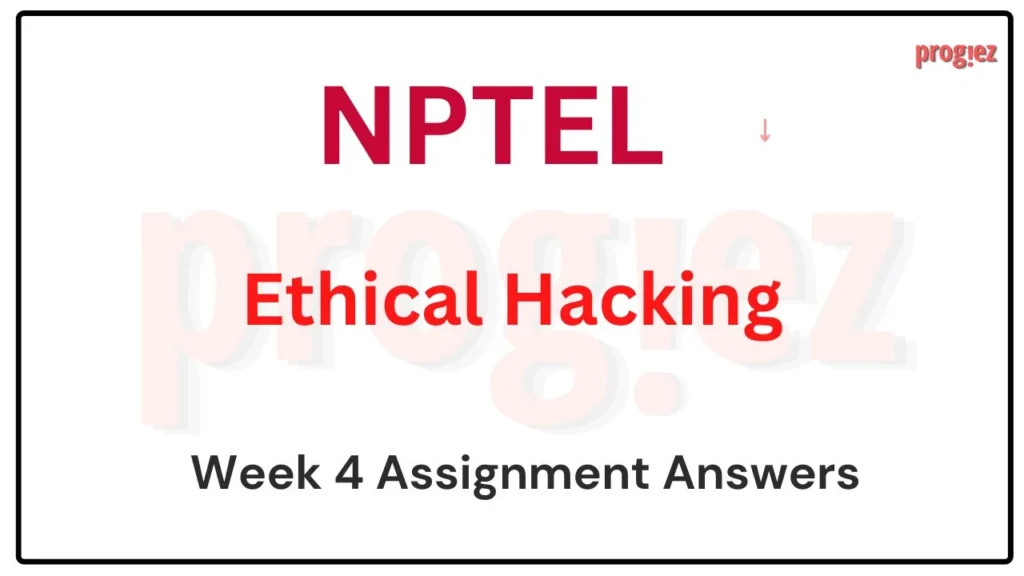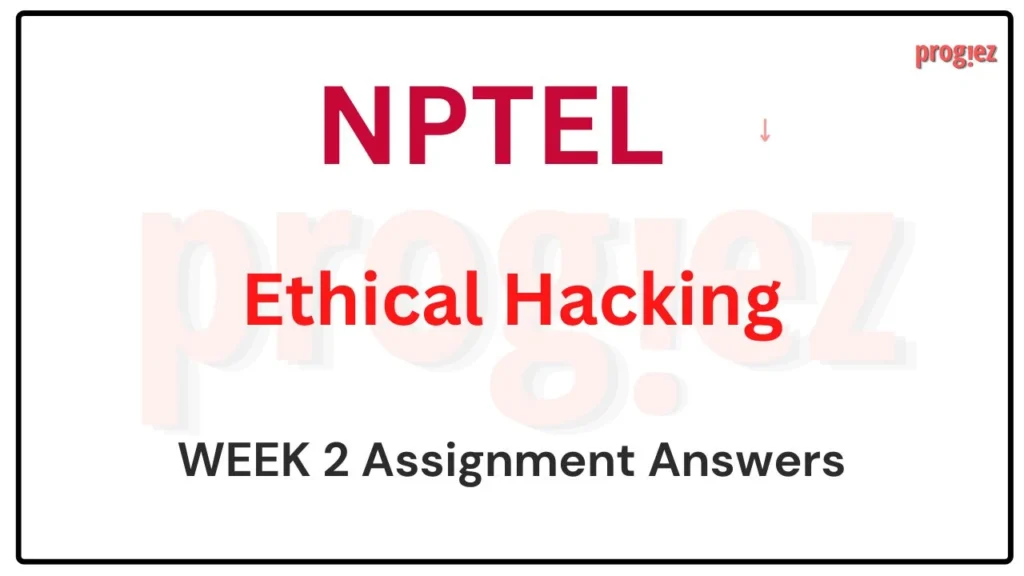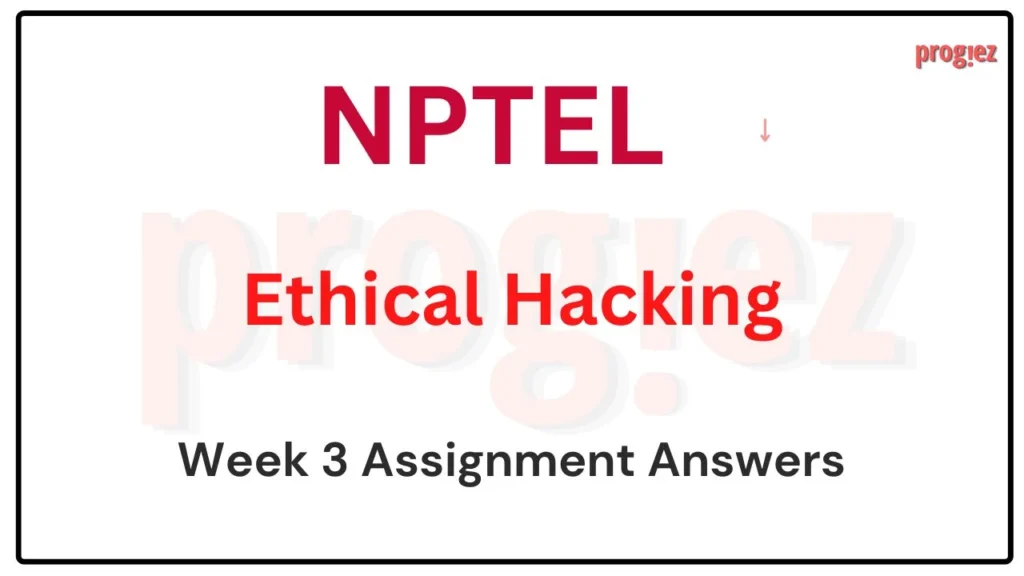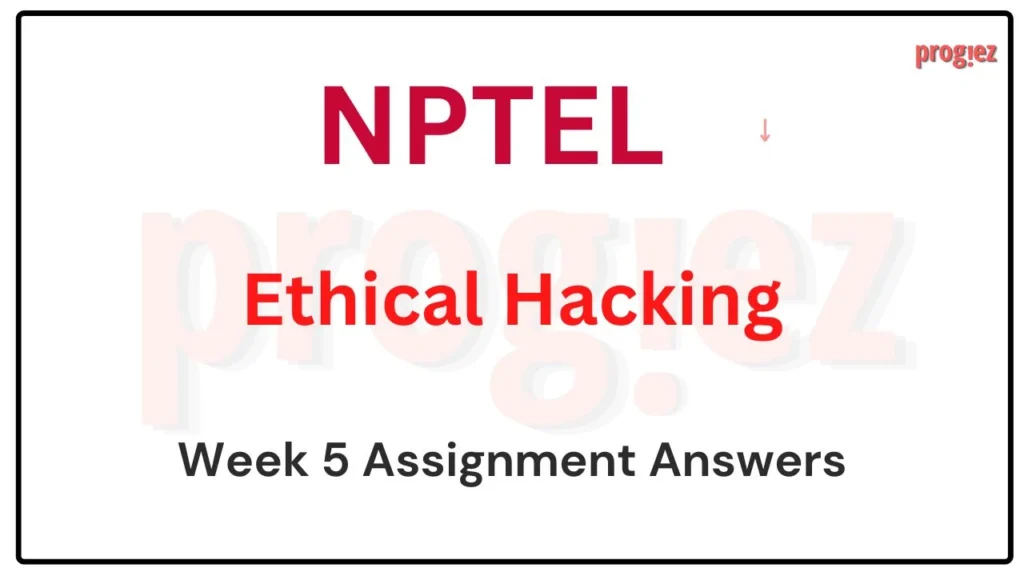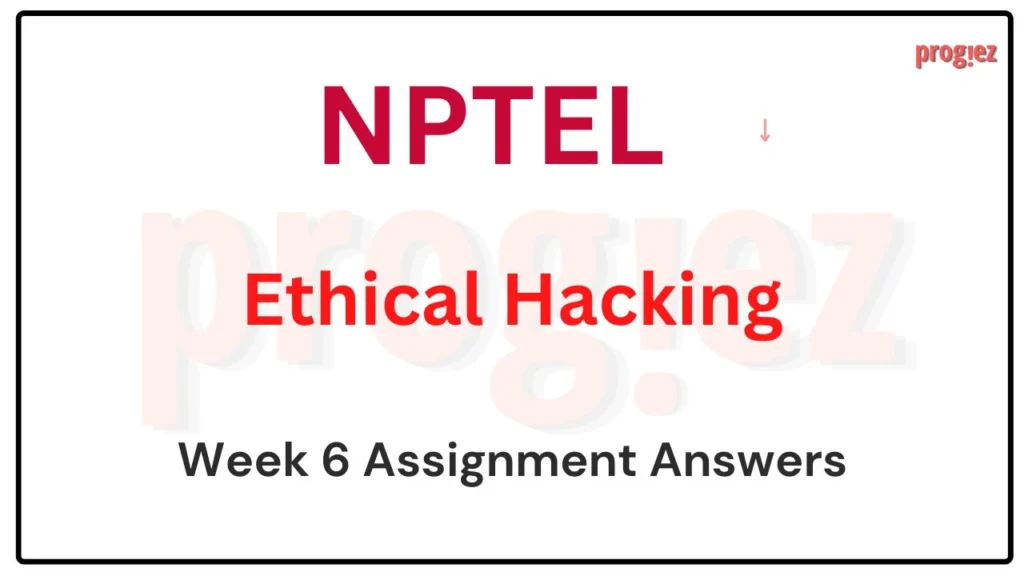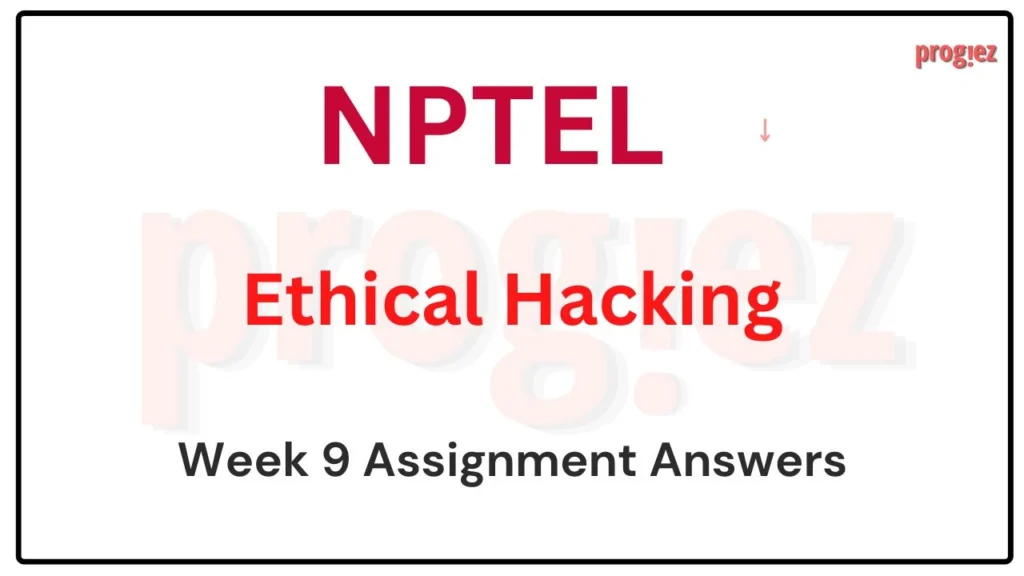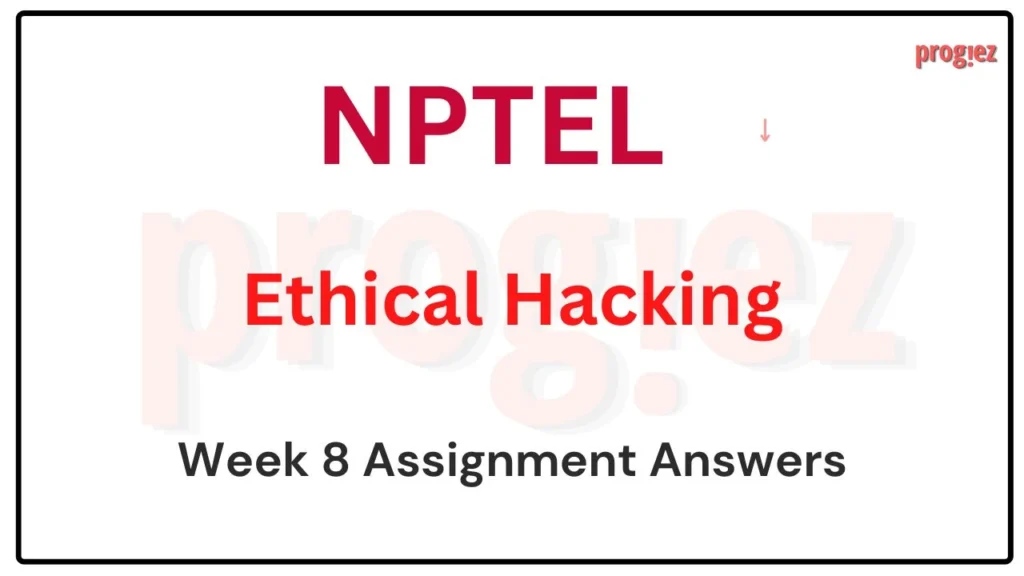Ethical Hacking Nptel Week 7 Assignment Answers
Are you looking for Ethical Hacking Nptel Week 7 Assignment Answers? You’ve come to the right place! Access the latest and most accurate solutions for your Week 7 assignment in the Ethical Hacking course.
Course Link: Click Here
Table of Contents
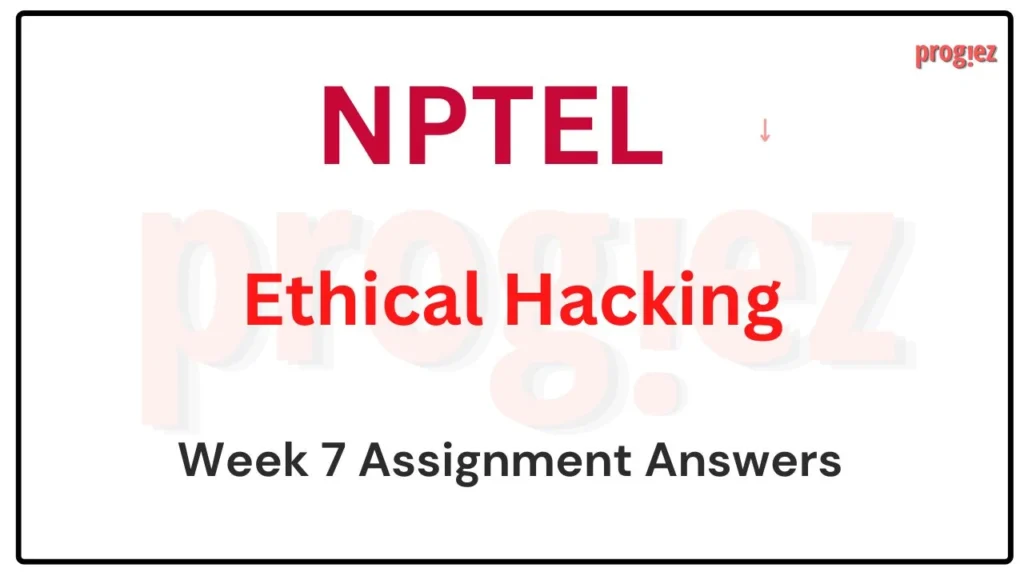
Ethical Hacking Nptel Week 7 Assignment Answers (July-Dec 2024)
Q1 .Consider a hash function H that generates hash values h1 and h2, when fed with messages m1
and m2 respectively. Which of the following options can never be true?
a. hl and h2 are equal, but m1 and m2 are unequal.
b. m1 and m2 are equal, but h1 and h2 are unequal.
c. None of these.
Answer: b. m1 and m2 are equal, but h1 and h2 are unequal.
‘Q2.What is meant by collision in the context of hashing?
a. More than one different messages can generate the same hash value.
b. After encryption, the ciphertexts corresponding to two or more plaintexts are the same.
c. The hash function generates the all zero string as the hash value.
d. None of these.
Answer: a. More than one different messages can generate the same hash value.
For answers or latest updates join our telegram channel: Click here to join
Q3.Which of the following does not correspond to the first preimage resistance in the context of hash functions?
a. It is difficult to find a message M such that HASH(M) = H, except for a few hash values H.
b. Given a message M1, it is difficult to find another message M2 such that
HASH(M1) = HASH(M2).
c. It is difficult to find two messages M1 and M2 such that HASH(M1) and HASH(M2) and unequal.
d. None of these.
Answer: b. Given a message M1, it is difficult to find another message M2 such that
HASH(M1) = HASH(M2).
c. It is difficult to find two messages M1 and M2 such that HASH(M1) and HASH(M2) and unequal.
Q4.Which of the following is/are false for Unkeyed hash function (Modification Detection Code)?
a. Unkeyed hash function is used to preserve integrity of message.
b. Unkeyed hash function is used to authenticate source of message.
c. Unkeyed hash function produces an output that depends only on the input data.
d. None of these.
Answer: b. Unkeyed hash function is used to authenticate source of message.
For answers or latest updates join our telegram channel: Click here to join
Q5.Which of the following statement(s) is/are true?
a. Hashing realizes a one-to-one mapping.
b. Encryption realizes a one-to-one mapping.
c. Hashing realizes a many-to-one mapping.
d. Encryption realizes a many-to-one mapping.
Answer: b. Encryption realizes a one-to-one mapping.
c. Hashing realizes a many-to-one mapping.
Q6.Which of the following are hash functions?
a. MDs
b. Triple-DES
c. SHA-1
d. AES
Answer: a. MDs
c. SHA-1
For answers or latest updates join our telegram channel: Click here to join
Q7.Hash functions are slower as compared to symmetric and public key encryption.
a. True
b. False
Answer: b. False
Q8.‘What are the block size and key size of the DES algorithm?
a. 64 bits, 56 bits
b. 56 bits, 64 bits
c. 64 bits, 64 bits
d. 64 bits, 128 bits
Answer: a. 64 bits, 56 bits
For answers or latest updates join our telegram channel: Click here to join
Q9.Which of the following is/are true for digital signature?
a. Digital signature is legally equivalent to hand-written signature.
b. In digital signature, signer uses his public key to sign.
c. Anybody having access to the signer’s public key can verify the signature.
d. None of these.
Answer: a. Digital signature is legally equivalent to hand-written signature.
b. In digital signature, signer uses his public key to sign.
Q10.The SSL record protocol is responsible for
a. High-speed data transmission
b. Data authentication
c. Non repudiation
d. None of these
Answer: d. None of these
For answers or latest updates join our telegram channel: Click here to join
More Weeks of Ethical Hacking: Click here
For answers to additional Nptel courses, please refer to this link: NPTEL Assignment
Ethical Hacking Nptel Week 7 Assignment Answers (Jan-Apr 2024)
Course Name: Ethical Hacking
Course Link: Click Here
These are NPTEL Ethical Hacking Assignment 7 Answers
Q1. Consider a hash function H that generates hash values h1 and h2, when fed with messages m1
and m2 respectively. Which of the following options can never be true?
a. hland h2 are equal, but m1 and m2 are unequal.
b. m1 and m2 are equal, but hl and h2 are unequal.
c. None of these.
Answer: b. m1 and m2 are equal, but hl and h2 are unequal.
Q2. What is meant by collision in the context of hashing?
a. More than one different message can generate the same hash value.
b. After encryption, the ciphertexts corresponding to two or more plaintexts are the same.
c. The hash function generates the all zero string as the hash value.
d. None of these.
Answer: a. More than one different message can generate the same hash value.
These are NPTEL Ethical Hacking Assignment 7 Answers
Q3. A message M is fed to a hash function HASH to generate the hash value H:
H = HASH (M)
Which of the following statements is true?
a. The number of bits in H is much larger than the number of bits in M.
b. The number of bits in H and M are almost equal.
c. The number of bits in M is much larger than the number of bits in H.
d. None of these.
Answer: c. The number of bits in M is much larger than the number of bits in H.
Q4. What of the following does not correspond to the first preimage resistance in the context of hash functions?
a. Itis difficult to find a message M such that HASH(M) = H, except for a few hash values H.
b. Given a message M1, it is difficult to find another message M2 such that HASH(M1) = HASH(M2).
c. Itis difficult to find two messages M1 and M2 such that HASH(M1) and HASH(M2) and unequal.
d. None of these.
Answer: b, c
These are NPTEL Ethical Hacking Assignment 7 Answers
Q5. Which of the following statement(s) is/are true?
a. Hashing realizes a one-to-one mapping.
b. Encryption realizes a one-to-one mapping.
c. Hashing realizes a many-to-one mapping.
d. Encryption realizes a many-to-one mapping.
Answer: b, c
Q6. Which of the following are hash functions?
a. MDS
b. Triple-DES
c. SHA-1
d. AES
Answer: a, c
These are NPTEL Ethical Hacking Assignment 7 Answers
Q7. Which of the following statement(s) is/are true?
a. Computing a hash function is faster than computing symmetric-key encryption.
b. Computing public-key encryption is slower than computing symmetric-key encryption.
c. Computing public-key encryption is slower than computing hash function.
d. Both public-key and symmetric-key encryption take approximately the same time.
Answer: a, b, c
Q8. What are the block size and key size of the DES algorithm?
a. 64 bits, 56 bits
b. 56 bits, 64 bits
c. 64 bits, 64 bits
d. 64 bits, 128 bits
Answer: a. 64 bits, 56 bits
These are NPTEL Ethical Hacking Assignment 7 Answers
Q9. What kinds of algorithms are typically used in the computation of digital signature?
a. Cryptographic hash function.
b. Symmetric-key encryption.
c. Biometric authentication.
d. All of these
Answer: a. Cryptographic hash function.
Q10. The SSL record protocol is responsible for
a. High-speed data transmission
b. Data authentication
c. Non repudiation
d. None of these
Answer: b. Data authentication
These are NPTEL Ethical Hacking Assignment 7 Answers

